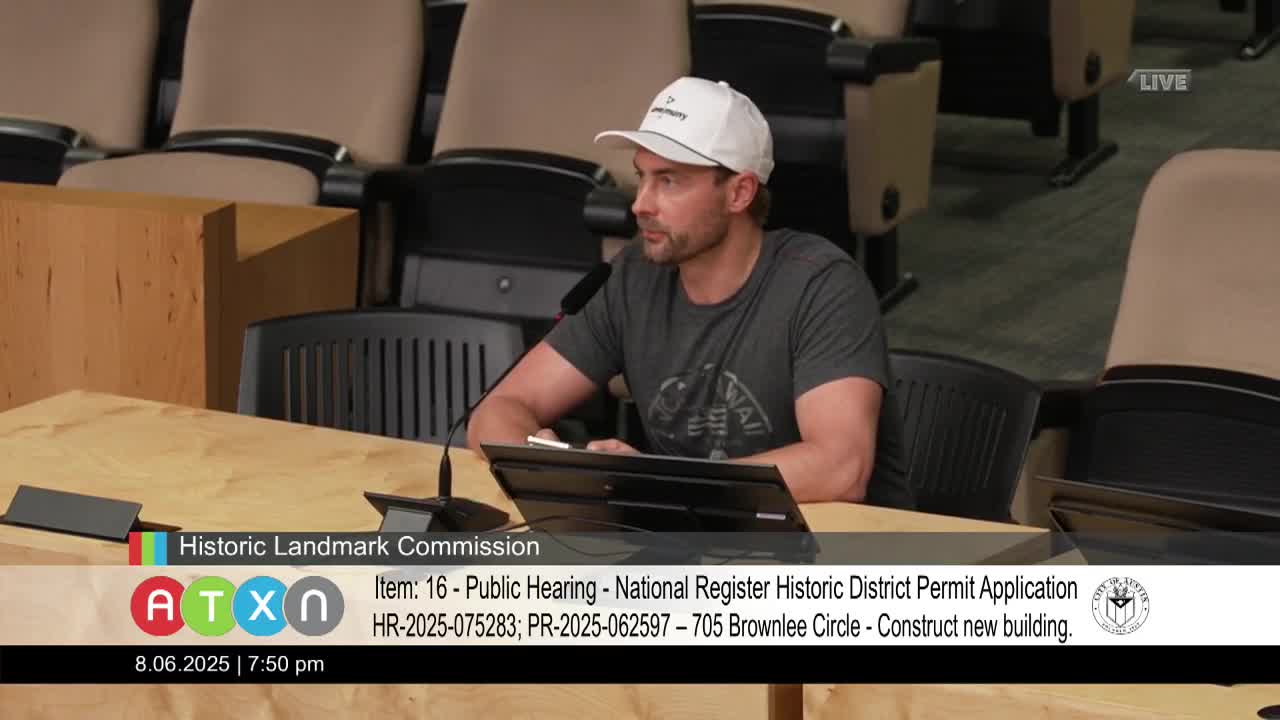Residents Debate Legality of 2 Story House Amid Zoning Restrictions
August 06, 2025 | Austin, Travis County, Texas
This article was created by AI summarizing key points discussed. AI makes mistakes, so for full details and context, please refer to the video of the full meeting. Please report any errors so we can fix them. Report an error »

In a recent government meeting held on August 6, 2025, discussions surrounding a proposed development project in Austin, Texas, highlighted significant community concerns regarding zoning regulations and neighborhood compatibility. The meeting featured a resident's appeal for a postponement of the hearing, citing worries about the scale of the new structure and its alignment with existing restrictive covenants.
The resident expressed that the proposed building's size does not fit with the character of neighboring homes, particularly emphasizing a covenant that restricts adjacent properties to a maximum of one story. This resident, who purchased their home five years ago, argued that such covenants are crucial for maintaining the neighborhood's integrity and requested clarity on the legal standing of these restrictions before proceeding with the project.
In response, the applicant defended the development, clarifying that the design had not changed significantly from its previous iteration as a triplex. They explained that due to zoning laws, the minimum number of units required in the area is four, which necessitated a shift in the project’s classification. The applicant also pointed out that the community had been informed about the potential for a two-story structure during the rezoning process, suggesting that the neighborhood was aware of the development's intentions.
The discussion raised important questions about the balance between development and community standards, particularly in areas with established covenants. The resident's concerns reflect a broader tension in urban planning, where the need for housing must be weighed against the preservation of neighborhood character.
As the meeting concluded, the implications of these discussions remain significant for both the developers and the community. The outcome of this project could set a precedent for future developments in the area, particularly regarding how zoning laws interact with existing neighborhood agreements. The next steps will likely involve further legal clarification on the restrictive covenants and continued dialogue between the developers and community members to address these concerns.
The resident expressed that the proposed building's size does not fit with the character of neighboring homes, particularly emphasizing a covenant that restricts adjacent properties to a maximum of one story. This resident, who purchased their home five years ago, argued that such covenants are crucial for maintaining the neighborhood's integrity and requested clarity on the legal standing of these restrictions before proceeding with the project.
In response, the applicant defended the development, clarifying that the design had not changed significantly from its previous iteration as a triplex. They explained that due to zoning laws, the minimum number of units required in the area is four, which necessitated a shift in the project’s classification. The applicant also pointed out that the community had been informed about the potential for a two-story structure during the rezoning process, suggesting that the neighborhood was aware of the development's intentions.
The discussion raised important questions about the balance between development and community standards, particularly in areas with established covenants. The resident's concerns reflect a broader tension in urban planning, where the need for housing must be weighed against the preservation of neighborhood character.
As the meeting concluded, the implications of these discussions remain significant for both the developers and the community. The outcome of this project could set a precedent for future developments in the area, particularly regarding how zoning laws interact with existing neighborhood agreements. The next steps will likely involve further legal clarification on the restrictive covenants and continued dialogue between the developers and community members to address these concerns.
View full meeting
This article is based on a recent meeting—watch the full video and explore the complete transcript for deeper insights into the discussion.
View full meeting
